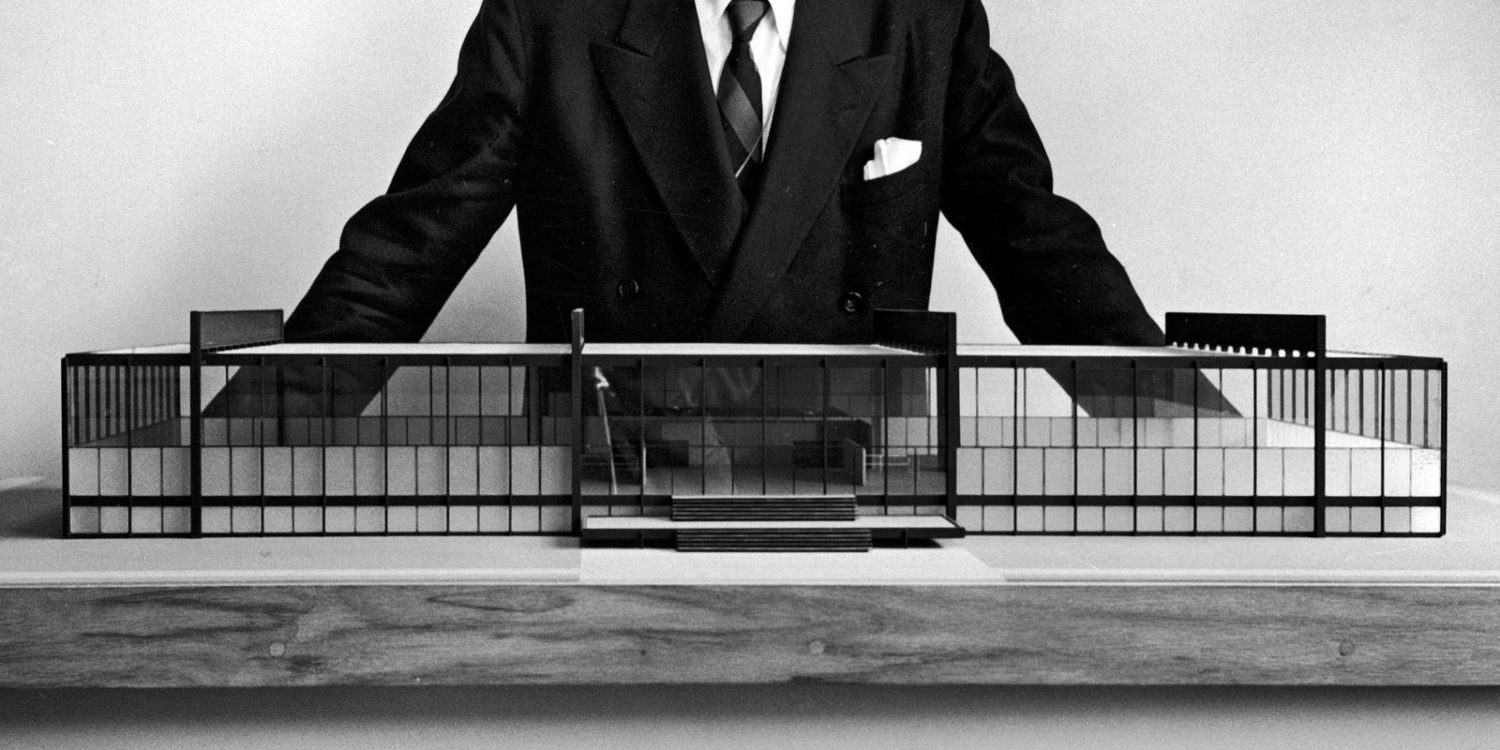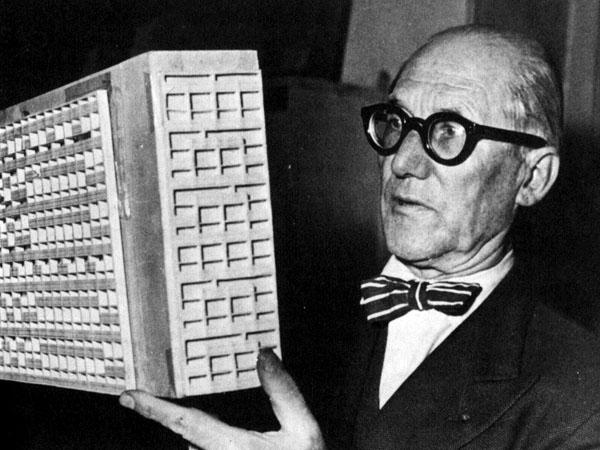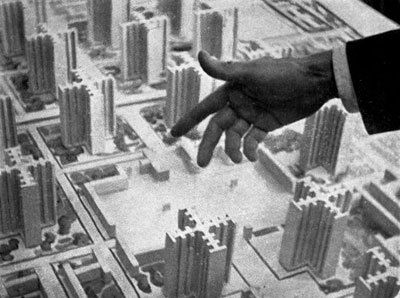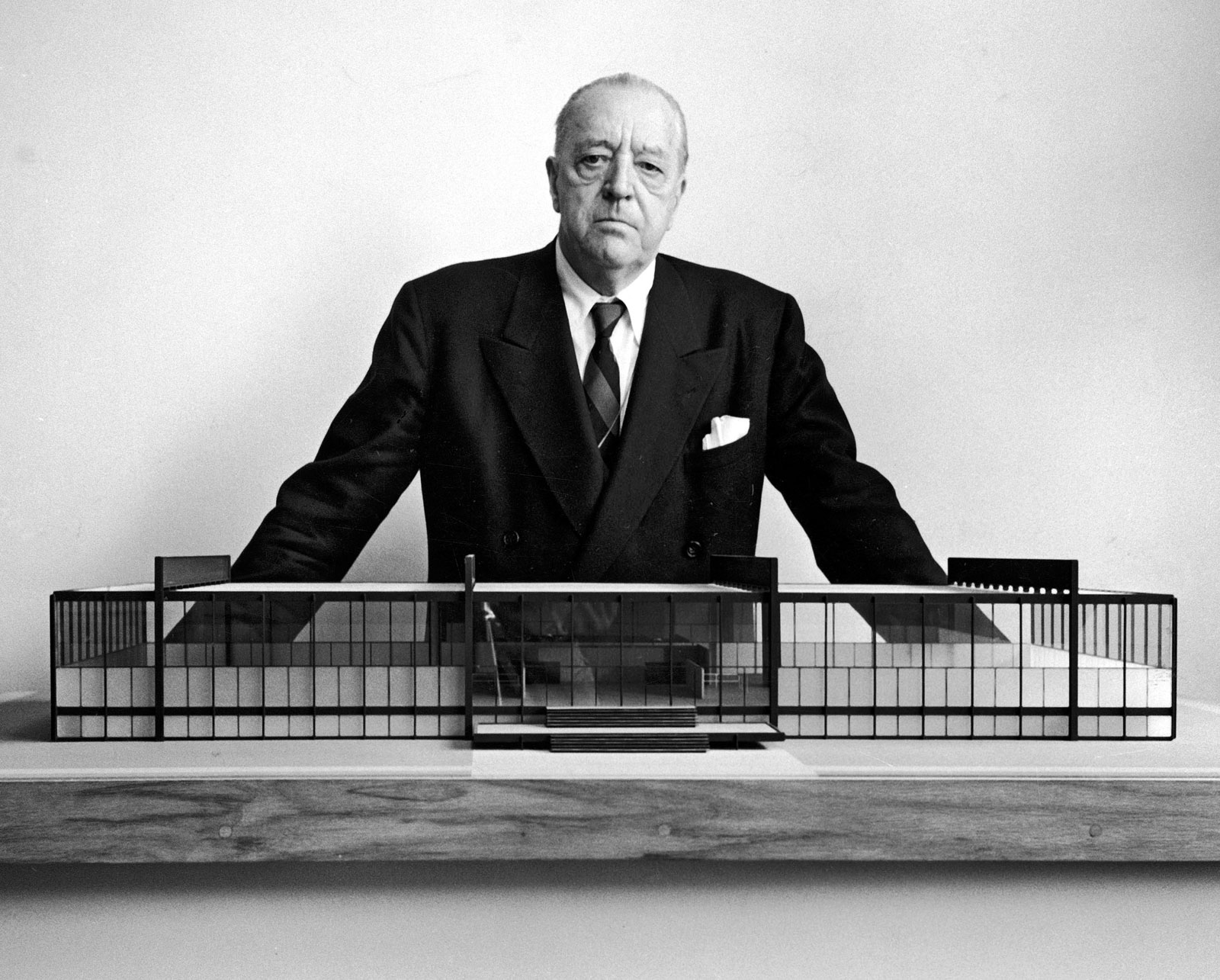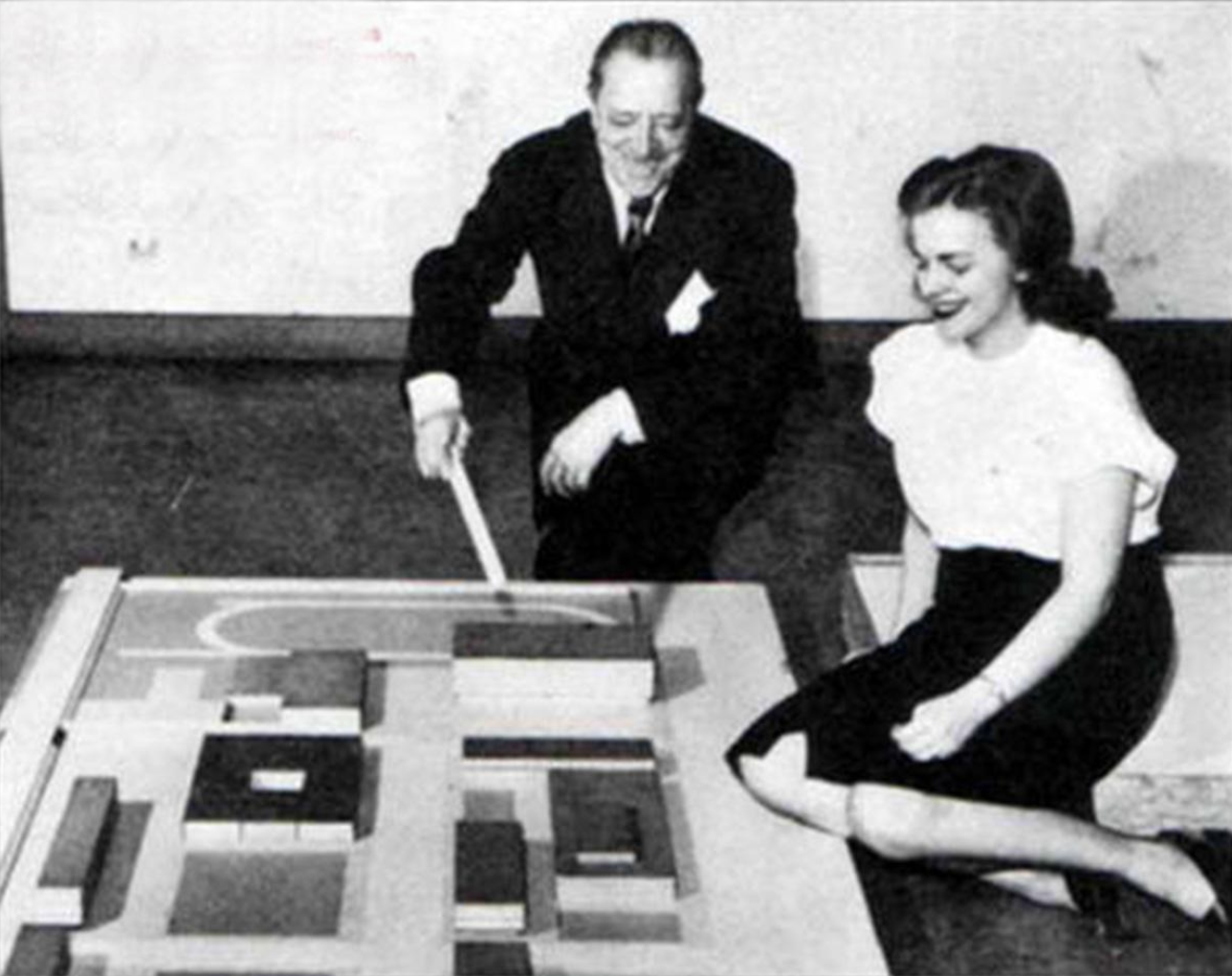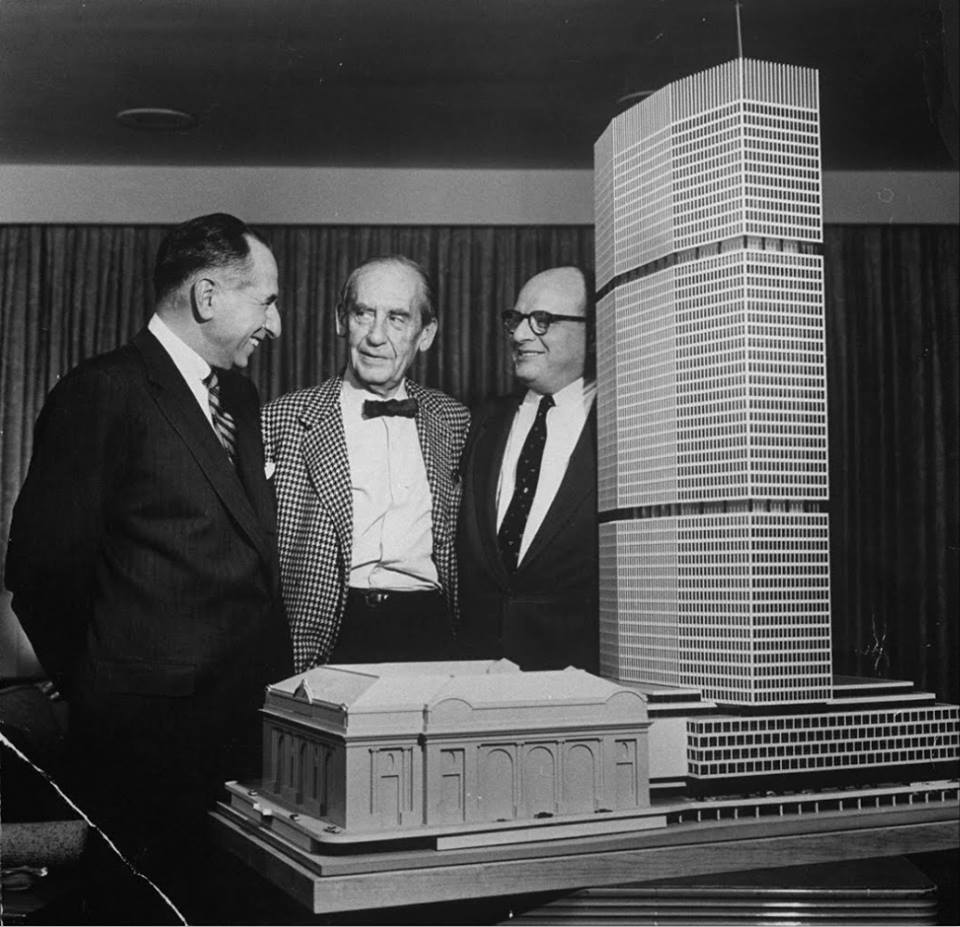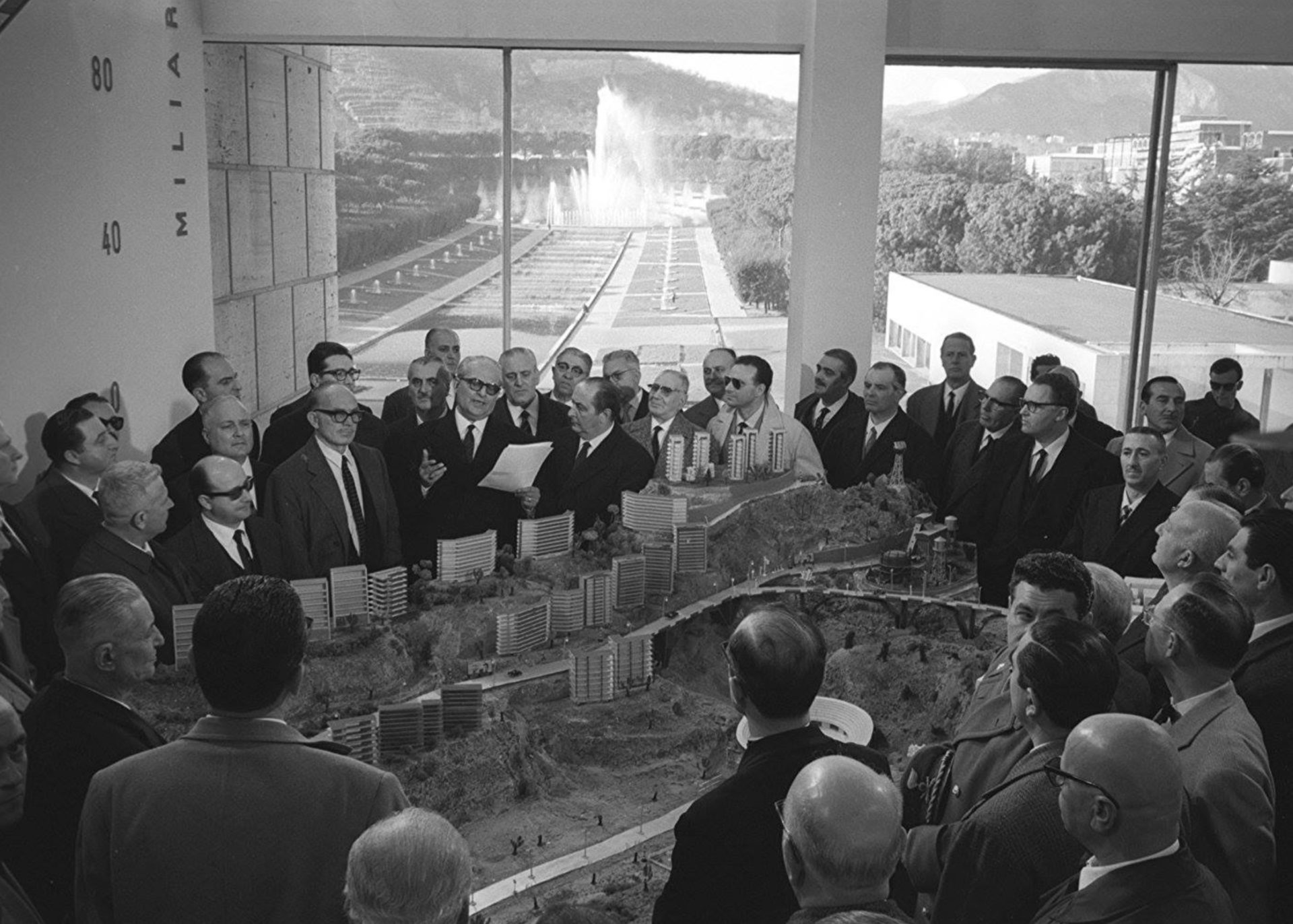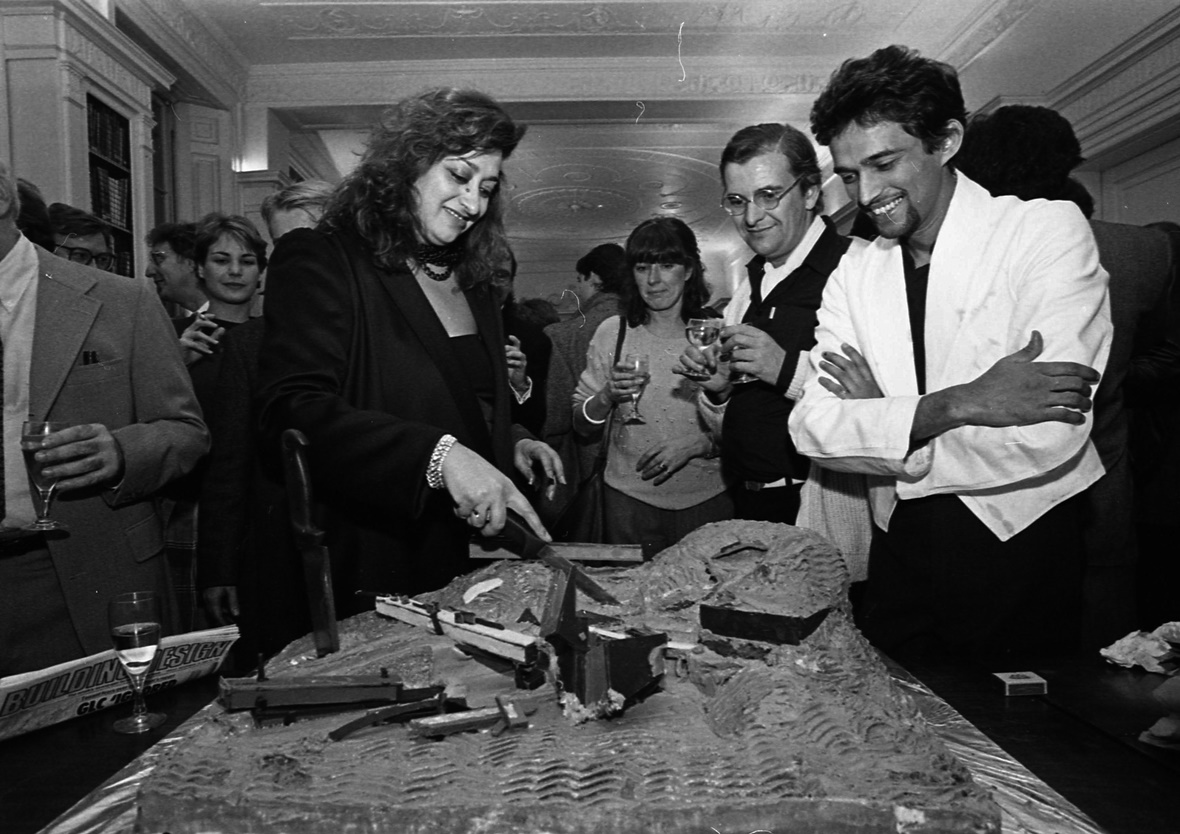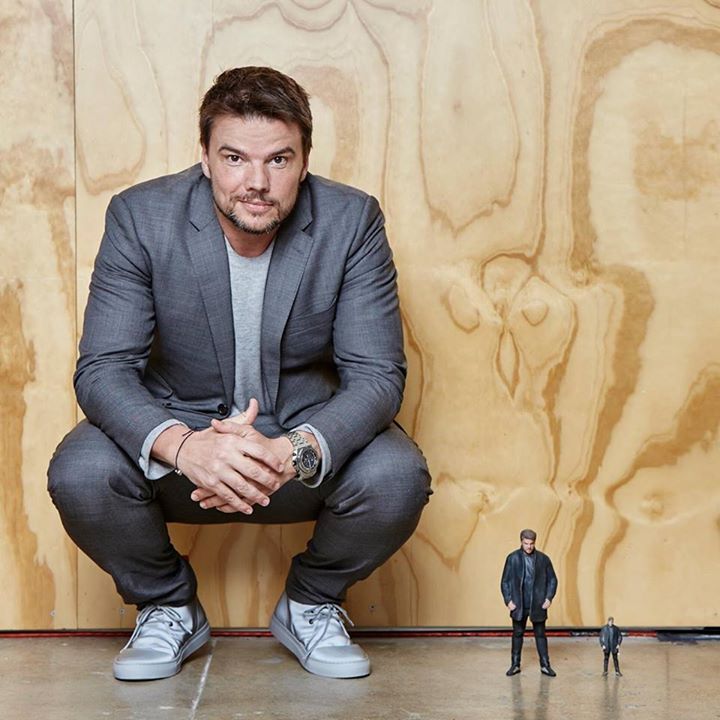As the wider societal debate surrounding gender discrimination intensifies and broadens, it comes as no surprise that the discipline of architecture has come under increasing scrutiny. Long a bastion of white men, the profession’s culture of promoting what are nowadays referred to as ‘starchitects’ has been a major factor in perpetuating male privilege and power. A critical interrogation of this culture must also include an examination of architecture’s historical relationship with the public imagination at large. After all, the social homogeneity of the architectural profession is not only a result of its own internal mechanisms, it is also a legacy of the ways in which this profession has historically shaped its own image in the eyes of the public.
Central to our foray here is the architectural model as a tool that has defined the history of architecture as well as the history of those who made architecture. For centuries, architects have used scale models to test their ideas and to communicate their designs to clients, stakeholders and larger audiences. Yet, with the emergence of modernism, models no longer merely served to represent buildings, they also became integral props to the portrayal of the architect himself. As an ever-growing collection of photographs of architects posing and interacting with miniaturized versions of their own designs circulated through books, magazines and lecture halls, these images shaped the public perception of the profession. Thus, the architectural model engendered the model architect – a man in a suit, the singular creator and genius. Today, this template still remains largely intact.
Representational techniques, be they models, drawings or photographs, carry deeply gendered connotations. They form the legacy of a visual culture that originated in the Renaissance period and hinged on a fundamental dichotomy between the viewer and viewed, the male subject and the female object.
Likewise, the very concept of the ‘model’ as a representational entity relies on a gendered relationship between the object and its beholder. Witness the fact that outside an architectural context, the word ‘model’ does not usually refer to an artful composition of cardboard and glue, but frequently to an exceptionally beautiful woman. All the more reason then to take a closer look at this most celebrated architectural tool, and reconstruct the illustrated history of the model architect…
1 – Enraptured
The history of the model architect invariably begins with Le Corbusier, who has shaped the image of the architect like no other. Unlike later generations, Le Corbusier chose to actively engage with his models in front of the camera; his spectacled gaze fixed on them, not us. This, we are led to believe, is not an architect versed in the art of representing himself, but rather a virtuoso immersed in his own representational tool.
2 – Size matters after all
Paradoxically, the most revealing image of Le Corbusier’s staged self-portrayal is a photograph that hardly features him. This well-known image, included in his 1933 publication, Ville Radieuse, shows only the architect’s hand hovering over a model of his design.
It is surely the oldest trick in the book, but in the end, size matters. As a mere technique of representation, the model might shrink architecture to a level of comprehensibility. Yet, when situated next to the architect himself, it conversely enlarges the architect’s own figure and prospect beyond the horizon of common people. Through the help of the scale model, the architect is made to inhabit a seemingly aperspectival and objective standpoint, a ‘view from nowhere’. Through this privileged position he constructs his heroic status, made in equal parts from the double conceit of his individualistic creativity and his neutral rationality.
3 – Embody the part
If Le Corbusier drafted the contours of the model architect, it was Mies van der Rohe who gave flesh and substance to it. Where Le Corbusier had been careful to avoid meeting the camera’s gaze, the notoriously reserved Mies faced it uninhibitedly. With his eyes fixed on the observer, the rest of Mies’ body quietly fuses with his models. As his arms seamlessly extend into the roof of his IIT design, architectural model and model architect become one.
4 – Props
Bodies are no innocent signifiers – they are gendered throughout. It is not just the illusion of an organic unity between the creator and his oeuvre that is upheld in these portraits, but also the inescapable truth of this creator being a man. This is underlined by this picture of Mies and an unknown young woman next to a model of the IIT campus. Here, it is the woman’s body and not Mies’ that intersects with the model. Yet, ironically, the contact between human body and scale model merely serves to produce an image of female ineptitude. Awkwardly perching on a pedestal, whose only purpose seems to be to allow her to sit in a skirt, the young woman exudes discomfort rather than mastery. If anything, like the scale model and the pointer Mies is wielding, this woman is a prop to Mies’ competence; her inertness a foil to his casual posture and confident gesture.
5 – Make it intimate
The first contact between an architect and his client is usually established behind closed doors. Only after the contracts have been signed does the architect appear from behind the curtains to unveil the building he was commissioned to design, similar to a magician demonstrating his latest trick. To underline the harmony in which a plan has come together, the carefully staged photographs of such moments usually feature friendly get-togethers next to a model, as shown in this picture of architects Emory Roth (l), Walter Gropius (c) and property developer Erwin Wolfson (r). The Pan Am building, proposed in 1959 for a plot adjacent to New York’s Grand Central Station, seems to be siding with Wolfson but also slightly overshadowing his presence. This picture reminds us that while architects are often portrayed as independently operating geniuses, they cannot prosper without the hard cash of developers and investors. Images, such as this one, employ the model as a beacon for a supposedly harmonious and intimate transaction between architect and client. It goes without saying that women rarely feature in these photographs, neither as architects, nor as clients.
6 – The business model
Despite the smiling faces and intimate gestures, the bromance between designers and financers of our built environment can be deceiving. In this picture of a redevelopment scheme for the inner city of the Hague from 1961, Dutch architects Jan Lucas (c) and Henk Niemeijer (r) present their model to Pier Luigi Nervi (l). The latter clearly acts as the role of expert instructor here, nonchalantly wearing a newspaper in one suit pocket while putting his hand in the other. Soon after this picture was taken, the developer who commissioned the scheme replaced his fellow countrymen with Nervi, the Italian ‘master of concrete’.
7 – Bring a crowd
At times, a model can also conjure up the very opposite of intimacy and bring about a much-needed sense of impartiality and aloofness. When the size and complexity of an architectural project demands a more all-encompassing portrayal of competency and objectivity, a male crowd is needed. This picture was taken in 1964 in the drawing office of a Dutch property developer, where the model serves as a means to compress the complex reality of everyday urban life, proclaiming the message that in the hands of these qualified men, the future of cities is not only predictable but malleable.
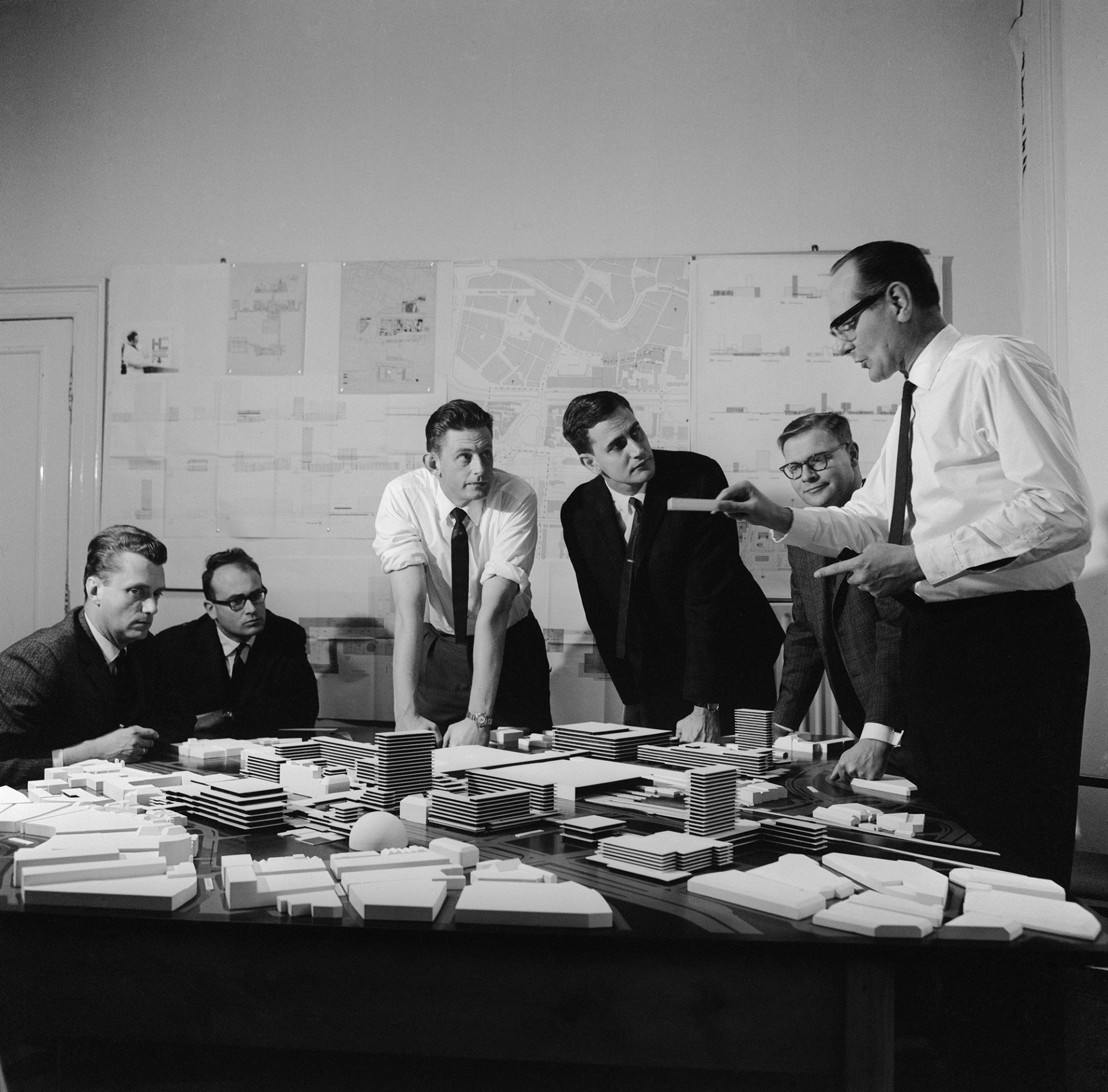
The drawing office of a Dutch developer, 1964.
Cas Oorthuys, Nederlands Fotomuseum
Expertise is expressed through the gestures of careful listening and the seemingly mandatory attire of (bow)ties, horn-rimmed glasses and rolled-up sleeves, as well as through the sheer size of an anonymous male mass contemplating the future of the city. In this way, the ‘all-seeing’ eye of the male stakeholder group echoes the male gaze, watching and controlling the moving female body ‘on the ground’.
Between these two scenes of the developer’s office and street, there emerges a more general gendered dichotomy underlying modernist discourse as a whole. On the one hand, these images bespeak a desire to create urban order by subjecting the city to male vision and power whilst on the other, they hint at the corresponding tendency to equate women with the inevitable disorder of urban life, with both being subdued. Therefore, what is at stake in the making of the model architect is not just women’s place at the drawing board, but also women’s freedom to roam the city without checks and obstacles.
8 – Hands over the city
While the image of hands over the city transports modernism’s socialist ideology by alluding to the hands of the working-class masses, the juxtaposition of architects and their models can also have the opposite effect. In the following still from Le mani sulla città (1963), an Italian drama film about real estate corruption in postwar Naples, the message is much more sinister. Not only are architects elevated above the life of ordinary people, they are also members of a shady partnership with corrupt politicians and money-driven speculators.
In a less threatening but visually similar way, commercial architect Philip Johnson clutches onto his beloved Sony building, demonstrating that the idiom of men and models transgressed the boundaries of modernism and postmodernism.
9 – Let them eat cake
When the time finally came for a woman to be captured on camera with her own model, her hands were not hovering aimlessly like Le Corbusier’s had once been, but were holding a knife. It was 1983 and the 33-year old Zaha Hadid stood surrounded by colleagues and students at the Architectural Association, smiling gleefully as she sliced through a cake model of her winning proposal for The Peak.
With hindsight, opting for an edible model to mark this momentous turn in Zaha’s career seems poignant. Long before Zaha’s award-winning oeuvre made her a role model for female architects across the world, this photograph shows her subverting the social scripts for both ‘woman’ and ‘architect’. As she reimagined the model architect using the language of food, a traditionally female domain, Zaha also preempted some of the overtly misogynist and racist critiques to which she would be subjected to in later years. In 2014, after becoming the first woman to win the coveted Pritzker Price, the The New York Times critic of architecture, Herbert Muschamp, described her as “a big raucous peasant woman” whose “earthier appetites” were directed towards lamb testicles instead of books. Zaha’s edible Peak model anticipates this notorious association of women with carnal appetites, drawing on the same terms to conjure up an alternative and positive image of a gluttonous architect. As Zaha sliced through her cake, the outlines of a different model architect began to take shape.
10 – Ditch the model and be big
As representational tools that compressed the complexity of architectural production into manageable objects, models played an important role in asserting the illusion of singular authorship. As centerpieces of staged interactions between architects and stakeholders, models also helped to enforce the conception of architectural production as embedded in a world of male rationality and power.
These days, architects seem no longer to require scale models to assert their potency. On the one hand, the iconographic value of today’s starchitects has soared to a point at which the model architect has completely displaced the architectural model as the most sought-after motif. Thus, Bjarke Ingels has taken to posing next to scale models of himself. With this, Ingels remains entirely in line with the never-ending pun on size that pervades the entire marketing of his firm BIG, including their catchy web address ‘big.dk’. Although Ingels’ firm has sought to portray itself as an equal-opportunity workplace, this has failed to evoke a reassessment of Ingels’ own public portrayal that uses machismo language centered on physical size.
On the other hand, a sea of digital images of buildings, both built and unbuilt, has caused the staged portrait of the architect to become partly redundant. This new visual language, which foregrounds the architectural product instead of its producers, obscures the fact that architecture is still a male-dominated field. There are undoubtedly numerous factors contributing to the continued lack of diversity in architecture, yet the legacy of architectural modernism and the particular image of the architect to which it gave rise remain crucial. Turning architecture into a more diverse profession also means reassessing its inheritance of a highly gendered form of self-representation. Only after this kind of reassessment has taken place can we begin to imagine what a future ‘model architect’ could be.
The authors would like to thank Dirk Baalman for suggesting some of the images accompanying this article.
